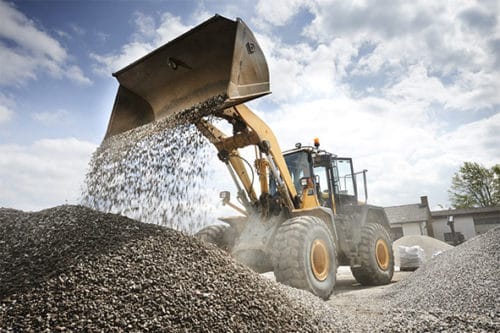Compare pump suction strainers and inline filters to determine the best fit for your hydraulic system.
 In hydraulic systems, the infiltration of contaminants—even minuscule particulates—can cause damage to components that ultimately results in lower system efficiency and shorter service life. For these reasons, industry professionals employ the use of hydraulic filters and strainers to remove unwanted solid and semi-solid materials from fluids before they enter or reenter the system.
In hydraulic systems, the infiltration of contaminants—even minuscule particulates—can cause damage to components that ultimately results in lower system efficiency and shorter service life. For these reasons, industry professionals employ the use of hydraulic filters and strainers to remove unwanted solid and semi-solid materials from fluids before they enter or reenter the system.
Two commonly used types of contaminant removal components used in hydraulic systems are pump suction strainers and inline filters. While they serve the same function (i.e., removing solid contaminants from hydraulic fluids), they differ in regard to operating principles and positioning within the system. The following article provides an overview of the two, including how they work and when to use them in a hydraulic system.
When Should You Use a Pump Suction Strainer?
Pump suction strainers are installed onto the suction inlet or piping of a pump to protect the system from taking in solid foreign matter from the fluid reservoir. They generally feature a coarse mesh screen designed to capture and collect large particulates as the fluid flows into the pump. Compared to the finer screens of filters, they are less flow restrictive and, consequently, less likely to cause cavitation when maintained properly.
When selecting a suction strainer for a pump system, it is important to choose a size that accommodates the system’s pressure and flow requirements. Despite being not as susceptible to cavitation as filters, an improperly sized component can still lead to cavitation and, ultimately, system failure. As such, it is essential to work with a qualified suction strainer/filter designer when constructing a hydraulic system to ensure you employ the right straining/filtering solution for your needs.
When Should You Use an Inline Hydraulic Filter?
Inline filters—also sometimes referred to as return line filters or spin-on filters—are installed within the fluid return lines of hydraulic systems. They enable industry professionals to filter finer particulates from the fluid stream directly within the system, resulting in highly efficient filtration operations. The positioning of these filtration components is ideal. The return flow pressure is sufficiently high enough to push the fluid through the finer screen but not too high that the filter requires a more complex design. This quality, combined with the low velocity of the fluid, ensures the system achieves higher filtering efficiency with minimal costs.
The main drawback to inline hydraulic filters is the risk of the back pressure generated by the component causing damage to the system components and overall system. For this reason, it is vital to consult with a filter specialist who can custom-design an inline filtration solution for your hydraulic system.
<Explore DOMS Inc.’s selection of filters and strainers for hydraulic systems.>
Contact the Hydraulic Filter and Strainer Experts at DOMS Inc. Today
Improper filtration in a hydraulic system can lead to a variety of problems, ranging from loss of pressure and lowered processing efficiency to cavitation and system failure. As such, it is crucial to use the right filter or strainer for your hydraulic system. If you need assistance designing and selecting the right solution for your needs, the experts at DOMS Inc. are here to help.
At DOMS Inc., our team has extensive experience designing and manufacturing components for hydraulic systems, including suction strainers and inline filters. For additional information about our standard and custom hydraulic component solutions, contact us or request a quote today.



